Here is some basic c# websocket code, it doesnt have to convert the data it receives to a string. I was just testing some stuff
C# simple websocket connection
using System;
using System.Collections.Generic;
using System.Net;
using System.Net.Sockets;
using System.Security.Cryptography;
using System.Text;
using System.Text.RegularExpressions;
using System.Threading;
using System.Windows;
public partial class MainWindow : Window
{
private Websocket_listen _listener;
public MainWindow()
{
_listener = new Websocket_listen("127.0.0.1", 13000);
_listener.StringReceived += _listener_StringReceived;
_listener.Start();
}
private void MainWindow_Closing(object sender, System.ComponentModel.CancelEventArgs e)
{
_running = false;
_listener.Stop();
}
private void _listener_StringReceived(string received)
{
}
}
public class Websocket_listen
{
public readonly int port = 13000;
public readonly IPAddress localAddr;
private TcpListener server = null;
private TcpClient client = null;
private NetworkStream stream = null;
private bool connected = false;
private byte[] bytes = new byte[2048];
private byte[] _last_key = new byte[4];
private int _last_message_length;
private bool read_more_message;
private Thread _current_thread;
private bool _running = true;
private int _received = 0;
private StringBuilder _results = new StringBuilder();
public event Action<string> StringReceived = null;
public Websocket_listen(string ipaddress, int port)
{
this.port = port;
localAddr = IPAddress.Parse(ipaddress);
server = new TcpListener(localAddr, port);
}
public void _running_loop()
{
while (_running)
{
try
{
server.Server.ReceiveTimeout = 5000;
server.Server.SendTimeout = 5000;
client = server.AcceptTcpClient();
// Get a stream object for reading and writing
stream = client.GetStream();
}
catch (Exception ex)
{
continue;
}
while (_running)
{
try
{
try
{
l.AcquireWriterLock(-1);
if (messsages.Count > 0)
{
byte[] msg = System.Text.Encoding.ASCII.GetBytes(messsages[0]);
//byte[] msg = System.Text.Encoding.ASCII.GetBytes("Connected to " + Environment.MachineName);
Array.Copy(msg, 0, bytes, 2, msg.Length);
bytes[0] = 0x81;
bytes[1] = (byte)msg.Length;
// Send back a response.
stream.Write(bytes, 0, msg.Length + 2);
messsages.RemoveAt(0);
}
}
finally
{
l.ReleaseWriterLock();
}
}
catch { }
try
{
_received = stream.Read(bytes, 0, bytes.Length);
}
catch
{
continue;
}
if (_received == 0)
continue;
if (!connected)
{
_is_connection();
continue;
}
if (!_parse_message())
break;
}
}
try
{
stream.Close();
client.Close();
}
catch (Exception ex)
{
}
}
private bool _parse_message()
{
int offset = 0;
int message_length = 0;
if (read_more_message)
{
_last_message_length -= bytes.Length;
message_length = _last_message_length;
if (message_length < bytes.Length)
message_length += 8;
}
else
{
_results.Clear();
var trigger = bytes[0];
var magic_byte = bytes[1];
bool is_text = (0x1 & trigger) != 0;
bool is_fin = (0x80 & trigger) != 0;
if (trigger == 0x88)
{
connected = false;
return false;
}
/*
text = 0x81
binary = 0x82
close 0x88
ping 0x89
pong -0x8A
*/
if (!is_fin)
{
return true;
}
if (!is_text)
{
return true;
}
//If the second byte minus 128 is between 0 and 125, this is the length of message.
//If it is 126, the following 2 bytes (16-bit unsigned integer), if 127, the following 8 bytes (64-bit unsigned integer) are the length.
var r = magic_byte - 128;
var key_starts_at = 0;
if (r <= 125)
{
key_starts_at = 2;
message_length = r;
}
else if (r == 126)
{
key_starts_at = 4;
message_length = BitConverter.ToUInt16(new byte[] { bytes[3], bytes[2] }, 0);
}
else if (r == 127)
{
key_starts_at = 10;
for (var m = 7; m >= 0; --m)
{
message_length += bytes[m] << (8 * (7 - m));
}
}
else
{
// not documented
}
//// because its encoded
_last_message_length = message_length;
Array.Copy(bytes, key_starts_at, _last_key, 0, 4);
offset = key_starts_at + 4;
}
for (var mx = 0; mx < message_length && offset + mx < bytes.Length; ++mx)
{
bytes[offset + mx] = (byte)(bytes[offset + mx] ^ _last_key[mx % 4]);
}
var new_result = System.Text.Encoding.ASCII.GetString(bytes, offset, Math.Min(message_length, bytes.Length - offset));
_results.Append(new_result);
read_more_message = message_length > bytes.Length;
if (!read_more_message)
{
try
{
StringReceived?.Invoke(_results.ToString());
}
catch (Exception ex)
{
}
}
return true;
}
private void _is_connection()
{
try
{
string data = System.Text.Encoding.ASCII.GetString(bytes, 0, _received);
if (!new Regex("^GET").IsMatch(data))
return;
Byte[] response = Encoding.UTF8.GetBytes("HTTP/1.1 101 Switching Protocols" + Environment.NewLine
+ "Connection: Upgrade" + Environment.NewLine
+ "Upgrade: websocket" + Environment.NewLine
+ "Sec-WebSocket-Accept: " + Convert.ToBase64String(
SHA1.Create().ComputeHash(
Encoding.UTF8.GetBytes(
new Regex("Sec-WebSocket-Key: (.*)").Match(data).Groups[1].Value.Trim() + "258EAFA5-E914-47DA-95CA-C5AB0DC85B11"
)
)
) + Environment.NewLine
+ Environment.NewLine);
stream.Write(response, 0, response.Length);
connected = true;
}
catch (Exception ex)
{
}
}
public void Stop()
{
_running = false;
}
public void Start()
{
// Start listening for client requests.
server.Start();
_current_thread = new Thread(new ThreadStart(_running_loop));
_current_thread.Start();
}
ReaderWriterLock l = new ReaderWriterLock();
List<string> messsages = new List<string>();
internal void Send(string msg)
{
try
{
l.AcquireWriterLock(-1);
messsages.Add(msg);
}
catch
{
}
finally
{
l.ReleaseWriterLock();
}
}
}
not a very robust javascript simple websocket to connect to c# with the same port
try {
var isopen = false;
connection = new WebSocket('ws://127.0.0.1:13000');
// When the connection is open, send some data to the server
connection.onopen = function () {
isopen = true;
connection.send('Ping'); // Send the message 'Ping' to the server
$('#open_messages').html("connection made\r\n<br>");
$('#socket_errors').html("");
};
// Log errors
connection.onerror = function (error) {
console.log('WebSocket Error ', error);
$('#socket_errors').html(error.currentTarget.url + " failed\r\n<br><button id=\"reconnect\">Try to connect</button>");
};
// Log messages from the server
connection.onmessage = function (e) {
console.log('Server: ', e);
$('#messages').append(e.data + "\r\n<br>");
};
connection.onclose = function(x) {
console.log('closed ', x);
$('#open_messages').html("Disconnected\r\n<br>");
$('#socket_errors').html("<button id=\"reconnect\">Connect</button>");
};
} catch (err) {
console.log(err);
}
That should get you started sending data back and forth, but will probably need extra exception handling.
Not sure if sending strings across is efficient, by you could probably change the data later.
